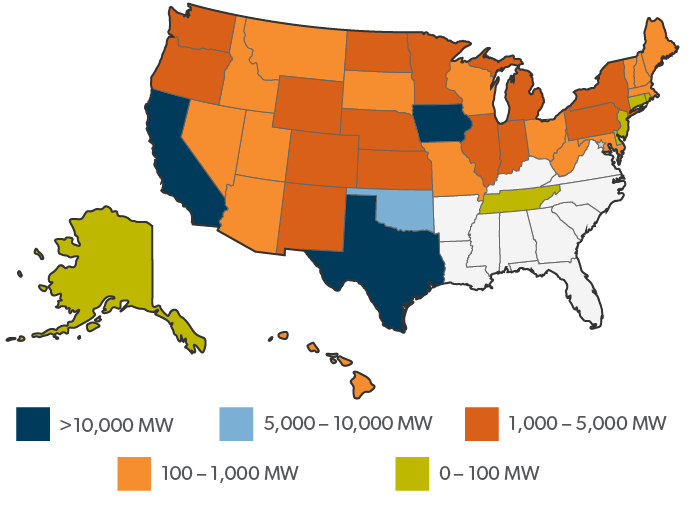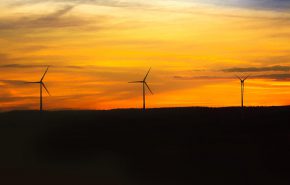Our society has reaped the benefits of renewable energy for millennia. As early as 400 and 100 BC, Egyptian and Greek engineers designed horizontal and vertical waterwheels that lifted water for irrigation and powered mechanisms for cutting wood. By the 17th century, Don Quixote was pursuing windmills in Spain, and the Dutch were showcasing their four-bladed windmills on postcards. As wind power inched its way to the forefront of renewable energy, the U.S. took it to a new level.
A New Face of Wind Power—Brush Electric Company
As America’s frontier expanded west in the 19th century, wind quickly became a staple of power—driving water movement, oil well drilling, and railway steam engines. In 1887, child prodigy Charles F. Brush recognized wind as renewable energy and built the first wind-power generator of electricity in his backyard in Cleveland, Ohio, producing 12 kilowatts (KW) of power. Brush turned his innovative power generator, which was operational for 20 years, into something of his very own—Brush Electric Company. With much success, Brush Electric Company transformed into what we know today as General Electric. A century later, on the heels of the National Aeronautics and Space Administration’s wind turbine technology advancements, U.S. Windpower built the world’s first commercial wind farm in New Hampshire—showcasing 20 turbines generating up to 30 KW of wind power each.
Renewable Energy—Wind Power in the U.S.

Today’s wind turbine generators can deliver anywhere from 400 KW to five megawatts (MW) of power, with wind farms reaching or exceeding 100 MW of installed capacity. Wind power now allows an individual to charge his or her personal batteries, or a small country to meet its entire electric demand. Naturally, the infrastructure and government support need to be in place to accommodate such feats in renewable power—but it is possible.
As federal grants and tax credits yield record-breaking years for newly installed wind energy in the U.S., power companies and utilities are seeing increasing economic value in using renewable energy. The current wind fleet of over 82 gigawatts accounts for over 100,000 jobs in all 50 states. Rick Perry, Secretary of Energy, fostered Texas into a leader of wind power during his tenure as governor, and continues to advocate for an energy-independent nation. This goal is certainly achievable, and although nuclear and fossil fuel sources currently dominate our energy mix, renewable sources will inevitably power an increasing demand for electricity in the future.
Wind Power—Did You Know?
To begin producing electricity, today’s wind turbines must run for 10 minutes at nine miles per hour (mph). However, at approximately 56 mph, wind turbines will shut down to a parked position, hindering blades from spinning out of control during storm loads. On July 9, 2015, Denmark’s wind turbines generated an astounding 116 percent of electricity, enough to meet the country’s demand and sell the excess to Germany, Norway, and Sweden.
![]()
For questions or additional information about GAI’s renewable energy, siting, permitting, engineering, and construction management services, contact Engineering Manager Enrique Bazán-Arias, PE, EMBA at 724.387.2170.


